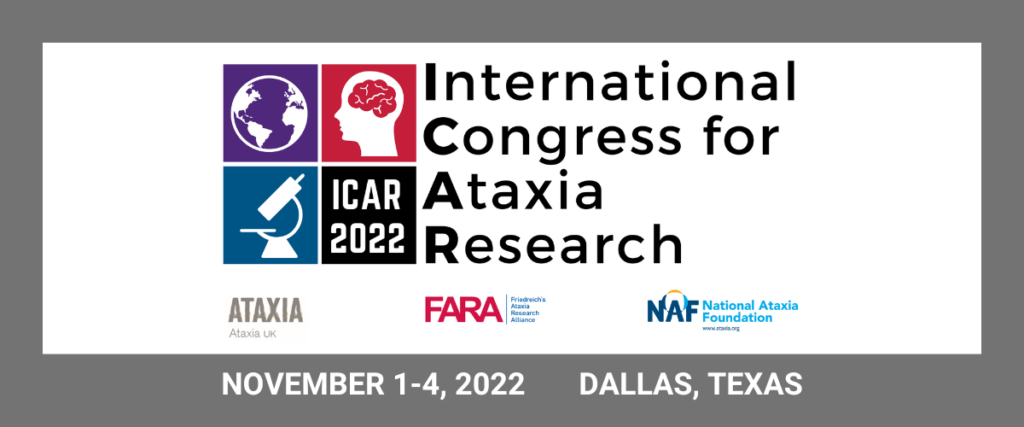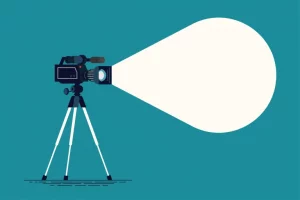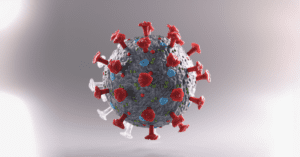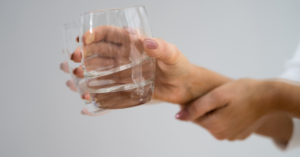
Written by Dr. Amy Smith-Dijak, with notes from Dr. Jorge Diogo Da Silva and Celeste Suart
Edited by Hayley McLoughlin
From debates about studying therapies, to training with an important clinical tool, to clinical trials hot off the presses, Thursday afternoon at ICAR was all about doing our best to treat patients.
Thursday afternoon was all about treating ataxia. It started off with some debates about new treatments and how to study them. They were followed by a couple of breakout sessions where attendees could hear about the latest clinical trial results, or get some training on how to measure ataxia severity.
The Debates:
Debate 1: Are gene-based therapies the answer to treating ataxias? This debate pitted Peter Todd from the University of Michigan (pro) against Deboral Hall from Rush University (con). Dr. Todd argued that that while gene therapies aren’t quite there yet, they are improving rapidly. In fact, the first successful gene therapy – for spinal muscular atrophy (SMA) – is already on the market. Dr. Hall, on the other hand, pointed out that there are still a lot of hurdles for gene-based therapies to overcome before we can start treating lots of patients with them. This includes both technical issues and the high cost of these treatments.
Debate 2: Should clinical trials focus on statistical tests or results in the clinic? Next up, Alexandra Durr from University Hospital Salpêtrière and David Lynch from the University of Philadelphia debated the best way to decide whether a clinical trial has been successful. Dr. Durr argued that it should be based on statistical test. This would make them less likely to be influenced by scientists’ biases or the placebo effect. It also makes it easier to study people who don’t have clinical symptoms yet. Dr. Lynch argued that we should focus on the effect that treatments have in the clinic. After all, at the end of the day the goal of a clinical trial is to make patients healthier.
Debate 3: Are animal models useful for studying ataxias? In the opinion of Laura Ranum from the University of Florida, mouse models of ataxia are great. They’re more complex than cells in a dish, but don’t have the kinds of ethical problems associated with experiments involving humans. Vikram Shakkottai from UT Southwestern made the point that so far none of the treatments for these diseases that looked promising in mice have worked in humans. This could be because mice and humans have different biology, so drugs might affect them in different ways.
No winner was declared for the debates, but there was an audience poll before and after each one. The audience started out heavily favouring one side in each debate. Interestingly, although before the first two debates the audience strongly agreed that gene-based therapies are the future and trials should focus on the effect on patient’s lives, they were evenly split at the end. This was a great example of how hearing both sides of an argument can get us to rethink our preconceived notions. This change in perspective will probably affect how some of the audience members do their research or treat their patients. At the same time, a theme in these debates was that these aren’t really either/or questions. While the debaters passionately defended their assigned side of the debate, none of them actually hold such black-and-white views. If these debates made one thing clear, it’s that research and medicine are at their best when people attack the same problem from many different angles.
After the debates, attendees split up for the two breakout sessions. One session was a series of presentations about clinical trial results. This included presentations on both drugs and more training-based treatments. Two of the drug trials in the session are ongoing. David Biondi from Seelos Therapeutics talked about Trehalose, a sugar that gives a boost to the cell-level garbage removal system called autophagy. Of note, Seelos Therapeutics is doing a study called STRIDES, which is testing weekly injections of trehalose at multiple sites around the world. Jay Barth from LEXEO Therapeutics presented their gene therapy trial that they hope will improve heart health in patients with Friedrich’s ataxia. This gene therapy trial entails a one-dose treatment, and participants will be followed for 5 years afterwards to see how they’re responding to treatment. They plan to treat 10 participants and want to have multiple sites around the US and maybe Canada. One site at UCLA in California is already open. Other speakers presented their results of recently completed early phase clinical trials in ataxia. Nancy Ruiz from Larimar Therapeutics showed that CTI-1601, another Friedrich’s ataxia drug, seems to be safe, although we don’t know yet if it’s effective. Martin Delatycki from the Murdoch Children’s Research Institute, on the other hand, found that resveratrol didn’t improve Friedrich’s ataxia patients’ symptoms.
Other talks focused on non-drug treatments. Adam Vogel from the University of Melbourne discussed SpeechATAX, a tablet-based speech therapy software. Trial participants’ speech was more intelligible after using the software, and the speech portion of their SARA score also improved. The participants also found that it was more convenient than traditional speech therapy. With these promising results in hand, Dr. Vogel and his team are working on improving the software based on patient feedback. Two other presenters talked about exercise-based trials. Scott Barbuto from Columbia University showed that aerobic exercise is more effective than balance exercises for patients with cerebellar ataxia. Chelsea Macphearson, also from Columbia, presented Engage, a project that works with ataxia patients to create exercise programs that are tailored for their specific circumstances. A small initial trial showed that patients were able to stick with the program and were more physically active because of it. Patients also had a small improvement in their symptoms, and the team behind Engage are planning a larger study to better understand the effect of this program on patients’ symptoms. Finally, Roderick Maas from Radboud University presented work on transcranial direct current stimulation (tDCS). This is where doctors stimulate a part of the brain by passing current through it between two electrodes attached to a patient’s skin. Some of participants who were treated with tDCS had a long-term improvement in their symptoms, but others didn’t get any benefit at all. Dr. Maas and his team are hoping that more research will help them understand why some patients responded to this treatment and others didn’t.
The other breakout session was a workshop on the SARA scale, which is a tool to measure the severity of a person’s ataxia. The tester gives the patient several simple tests, like standing still in different poses or following the tester’s finger with their eye. They then combine the patient’s score on the individual tests into one overall score. The workshop leaders reviewed how the SARA scale works, and then had attendees give scores to patients who had been filmed doing the tests. Attendees got feedback on how well they scored patients, and the workshop leaders gave them advice about how to handle specific cases. The goal of all this was to make sure that the attendees, whether they’re working with patients in clinics or as part of the study, use the SARA scale correctly and consistently. Otherwise, it gets difficult to interpret the results of clinical studies or for one doctor to know what another doctor’s assessment of a patient really means.
Between the debates, the clinical trial results, and the training, Thursday afternoon had a lot to offer anyone who’s interested in treating ataxia patients. With luck and a lot of hard work, some of the studies discussed in this session will soon be making a real-world difference in patients’ lives. The rest will guide work on newer and better treatments in the future.
Keywords
Animal model: A type of animal that has a human disease – or parts of a disease – that humans also have. Some of these are naturally-occurring, but more often scientists use genetic engineering to make an animal model of the disease they want to study.
Gene therapy: Any therapy that uses DNA or RNA to treat a disease. Popular methods include adding a healthy version of a gene, inactivating the mutated version of a gene, or directly editing the DNA.
SARA scale: A tool for measuring the overall severity of a person’s ataxia. It combines a person’s scores on a group of tests for different aspects of ataxia.
About the Author and Editor
Amy Smith-Dijak is a postdoctoral fellow at McGill University studying axonal transmission in ARSACS. She has no conflict of interest to declare regarding this session.
Dr. Hayley McLoughlin is an Assistant Professor in the University of Michigan Neurology Department, with a joint appointment in the Department of Human Genetics. Her lab currently focuses on establishing pathogenic mechanisms and therapeutic interventions for SCA3. She has no conflict of interest to declare regarding this session.

Los científicos desarrollan un nuevo enfoque para evaluar la Ataxia en casa
Escrito por Ziyang Zhao Editador por la Dra. Hayley McLoughlin Traducido por Ismael Araujo Aliaga Una aplicación para teléfonos inteligentes recientemente desarrollada permitirá a los pacientes evaluar la ataxia en casa. Existe Read More…

The SCA2 Chronicles: Unmasking COVID-19’s impact on Mind and Movement in a Galaxy Not So Far Away
Written by Kaitlyn Neuman Edited by Celeste Suart, PhD Lessons from a global pandemic: COVID-19 negatively impacts speech function and mental health in SCA2 patients. A short time ago, in a Read More…

Snapshot: O que é Distonia?
Distonia é uma desordem que afeta a maneira como uma pessoa se move. Mais especificamente, pessoas com distonia têm contrações musculares involuntárias, que podem causar posturas anormais. A distonia pode Read More…










